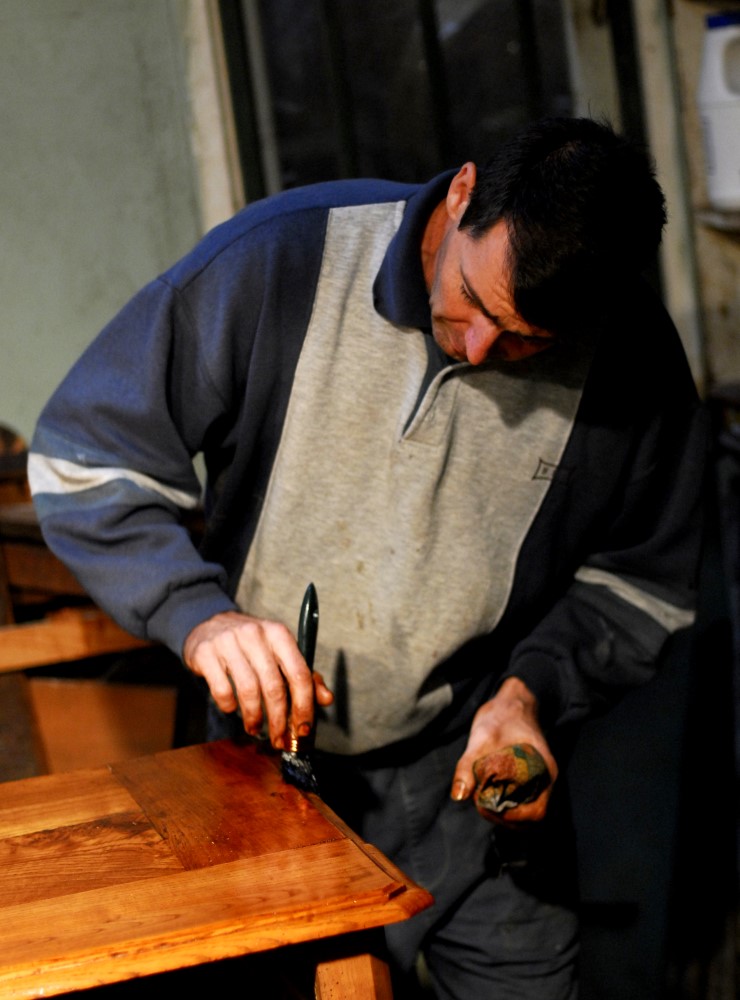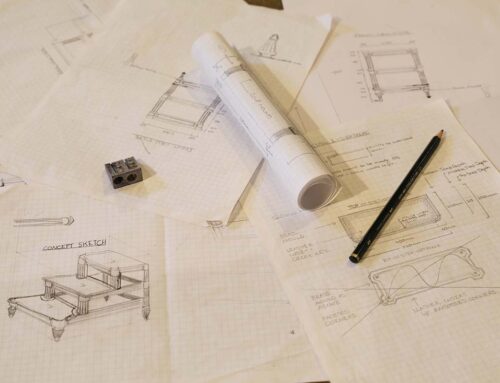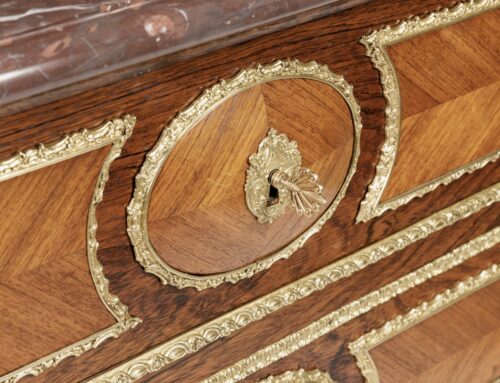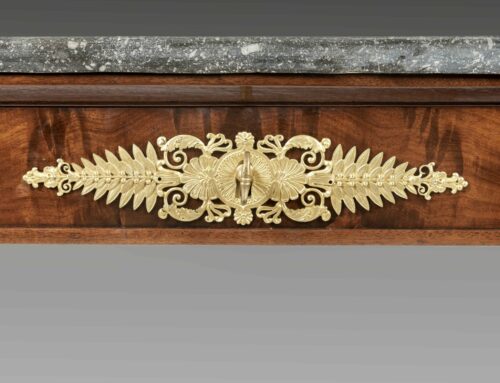Behind the Scenes – Restoring antique antique furniture to its former glory
Meet Lyndon, the talented Wallrocks craftsman keeping alive the centuries-old techniques responsible for bringing back to life Wallrocks antique furniture. A vital member of the Wallrocks team for over over 30 years, Lyndon’s spent most of his adult life working with Wallrocks antiques, learning and applying the complex set of skills required to restore antiques to their former glory without compromising their integrity which is paramount.
We talked to Lyndon about his career with us, his love for antique furniture and what’s involved in the craft.
How long have you been working with antiques and how did you become involved in the industry? I’ve been working in the industry for 34 years – 33 of which have been spent with Wallrocks – but I got into it more by luck than anything else. I’ve always enjoyed working with timber and started out working for a restoration company in Stone’s Corner. When they closed a year later, I approached Nick Wallrock, who just happened to be located across the road. The rest is history.
How did you learn the trade? The skills you need to restore furniture, like French polishing and veneering, aren’t taught anywhere in Australia. In Europe and the UK, where there’s a longstanding tradition of furniture-making, there are still some places that teach these trades – but they’re really a dying art and have been for a long time. That meant I had to learn on the job. When Nick started the business he had to teach himself to restore, so he taught me a lot.
What are the main techniques you are skilled in? When I started out, English Victorian furniture was very popular which meant there was a big call for French polishing. For those who don’t know, it’s a method of hand-polishing furniture with shellac polish and linseed oil to create a really high gloss surface and rich colour. It’s very slow, time-intensive work that involves filling the grain of the wood with polish by rubbing it over and over again.
As trends have changed and we’ve got into different types of furniture, we’ve continued to learn along the way. These days a lot of the work I do is repairing and restoring complex original details, like marquetry veneers. Veneer repairs can be very challenging, which is a testament to the quality of the original piece of furniture. They can be quite fiddly and painstaking – I have to hand cut shapes and glue them in, just as the original craftsmen did.
We basically do everything right here in the workshop. I even make replacement keys for pieces of furniture where the originals have been lost, and use traditional rush weaving techniques to repair rush seats (we use a special type of paper as opposed to the natural long grasses that would have been used centuries ago).
What do you love most about your job? At Wallrocks we prefer to work with antiques that haven’t been touched or restored at all, so we do get a lot of old pieces in that need a bit of love and attention. It’s really satisfying when we get a piece of furniture in that’s really dirty and shabby, then we clean it all off and find that it has spectacular details hidden underneath.
Are there any particular antique furniture periods you are a fan of or famous craftsmen you admire? I love working on late 19th Century French furniture because they have such intricate details and look so spectacular by the time I’m finished. As for craftsmen, Robert Gillows was an English furniture maker from the 19th Century who is very well-known for the quality of his work so he’s someone whose work I’m very impressed by. Of course, a lot of craftsmen didn’t sign their pieces so you have to judge who made it based on the style and quality.
To learn how any of Wallrocks pieces might look once they’ve been restored, contact us.







